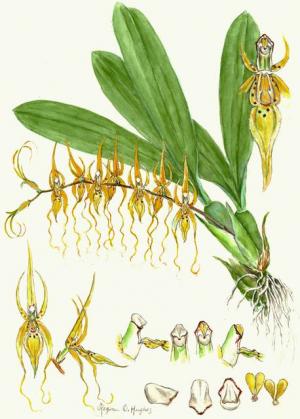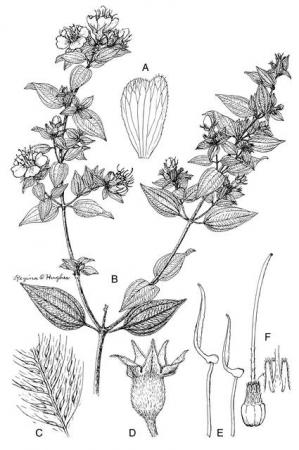
Scientific illustration requires artistic talent and a great deal of discipline. Scientific illustrators must have the artistic talent to capture the specimen they are drawing, but they cannot insert their own artistic flourishes, as most artists do. They must capture the exact shape, structure, color, texture, etc., of an organism for scientists to study. Their work is crucial to the study of natural history, and naturalists sometimes see an unknown characteristic in a drawing that they had not noticed in the actual specimen. Dr. Regina Olson Hughes, an illustrator for the Department of Botany in the National Museum of Natural History, recalled, “I guess I do the best that I can—angels can do no more.” Her beautiful but accurate drawings of plants were published in scientific journals worldwide.

Regina Olson was born in Herman, Nebraska in 1895. She loved to draw as a child and attended art school. Unfortunately, after serious ear infections, she lost her hearing at the age of 13. She learned lip reading and attended public schools, as her parents insisted that she function in the hearing world. But for college she attended Gallaudet, the school for the deaf in Washington, D.C., receiving her B.A. degree. There she met her husband, Frederick Hughes, a teacher, and they married in 1923. Hughes was skilled in four Romance languages, French, Spanish, Italian and Portuguese, so initially she worked as a translator for the State Department. But with her love of art and the plant world, she then tried her hand at botanical illustration. For many years she worked for the Agricultural Research Service of the U.S. Department of Agriculture, drawing thousands of scientific images of plants and plant parts. She received the USDA exceptional service award in 1962.

She retired from the USDA in 1969 but soon put pen to paper for Smithsonian researchers. Botany curator Robert W. Read observed her sketching a plant and asked her for help with a short-term project. This led to full-time work as a volunteer botanical illustrator. She would arrive at the National Musuem of Natural History in her classic Thunderbird, doing contract work for the museum scientists. Most of this work was in pen and ink, but she also worked in oils and watercolors. One of her favorite pastimes was drawing the orchids on the Visitor Information Desk in the museum foyer. In Hughes' time with the Smithsonian, her work was exhibited several times in the National Museum of Natural History. In 1982, a collection of forty of her scientifically accurate, but beautiful, watercolors of orchids were displayed in the Rotunda Gallery of the Museum. Mrs. Hughes was the first deaf artist to have her artwork displayed there.
Hughes received many honors for her work, notably her alma mater Gallaudet giving her an honorary degree and Phi Kappa Zeta naming her woman of the year in 1970. A plant genus and species, Hughesia reginae, a type of daisy, was named in her honor, before her death in 1993.
Related Resources
- MSS 175 - Regina Olson Hughes Papers, 1936-1991, Gallaudet University Library Deaf Collections and Archives
- Deaf Artist: Regina Olson Hughes, Alyssa Carland, Clemson University
Produced by the Smithsonian Institution Archives. For copyright questions, please see the Terms of Use.

Leave a Comment